The 'post Covid' years have brought rapid increases to many things in life, and screen enclosures are no exception. In fact the rising cost in screen enclosure pricing out paces inflation substantially, due to a number factors such as:
a. Growth in people moving to Florida.
b. Shrinking pool of labor; not only is there a nationwide shortage of tradesman but property values are pricing them out of living here.
c. Materials and shipping costs increasing radically.
To be direct, it is not uncommon to find that the price of a screen enclosure has doubled in price over the last few years... while that may seem extreme, consider that your home value in Florida has also likely doubled over the last 5 years. According to FloridaRealtors.org Florida home values have risen over 80% in the last 5 years, and that is just an average with popular areas rising much more.
Now let's jump into it!
The word screen enclosures has became fairly ambiguous, it can mean different things for many people and results in confusion. Confusion in the construction process and the estimating process, and well even confusion when gathering information about screen enclosures online. We can all agree that confusion is not good for anyone. In this blog post we’re going to clarify exactly what types of screening enclosures there are, how they are properly described, what they mean, what types of materials, and go over a little bit of the cost. As you will see some of the screen enclosures cost as little as $1000 while others could run up to… well into the six figures.
Under-truss Screen enclosures
First up are under-truss screen enclosures. Some people refer to them as a screened in lanai. These screen enclosures are built within openings under an already existing truss roof. Notice I said truss roof there, there may be differences when built under something other than a truss roof.

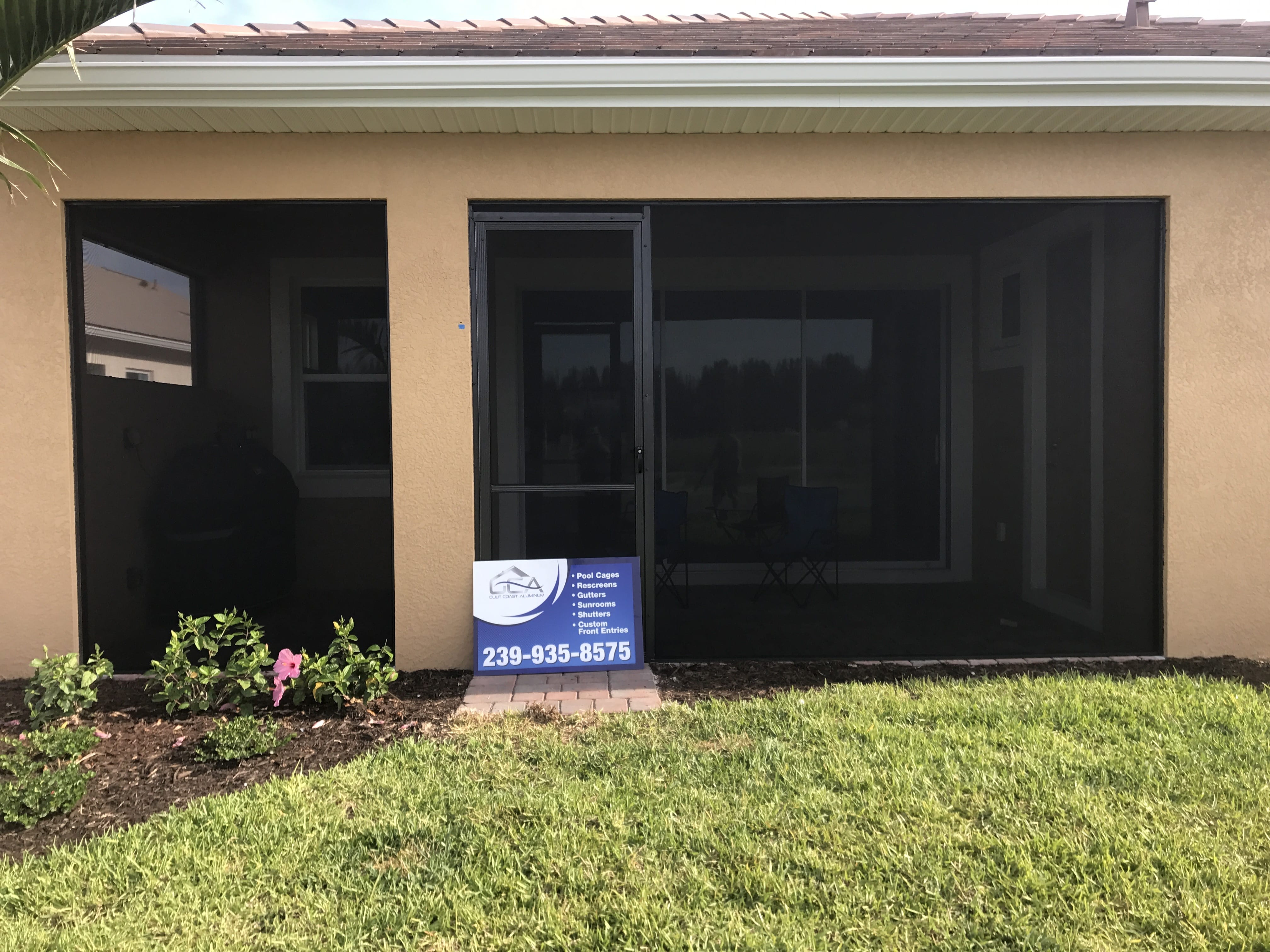
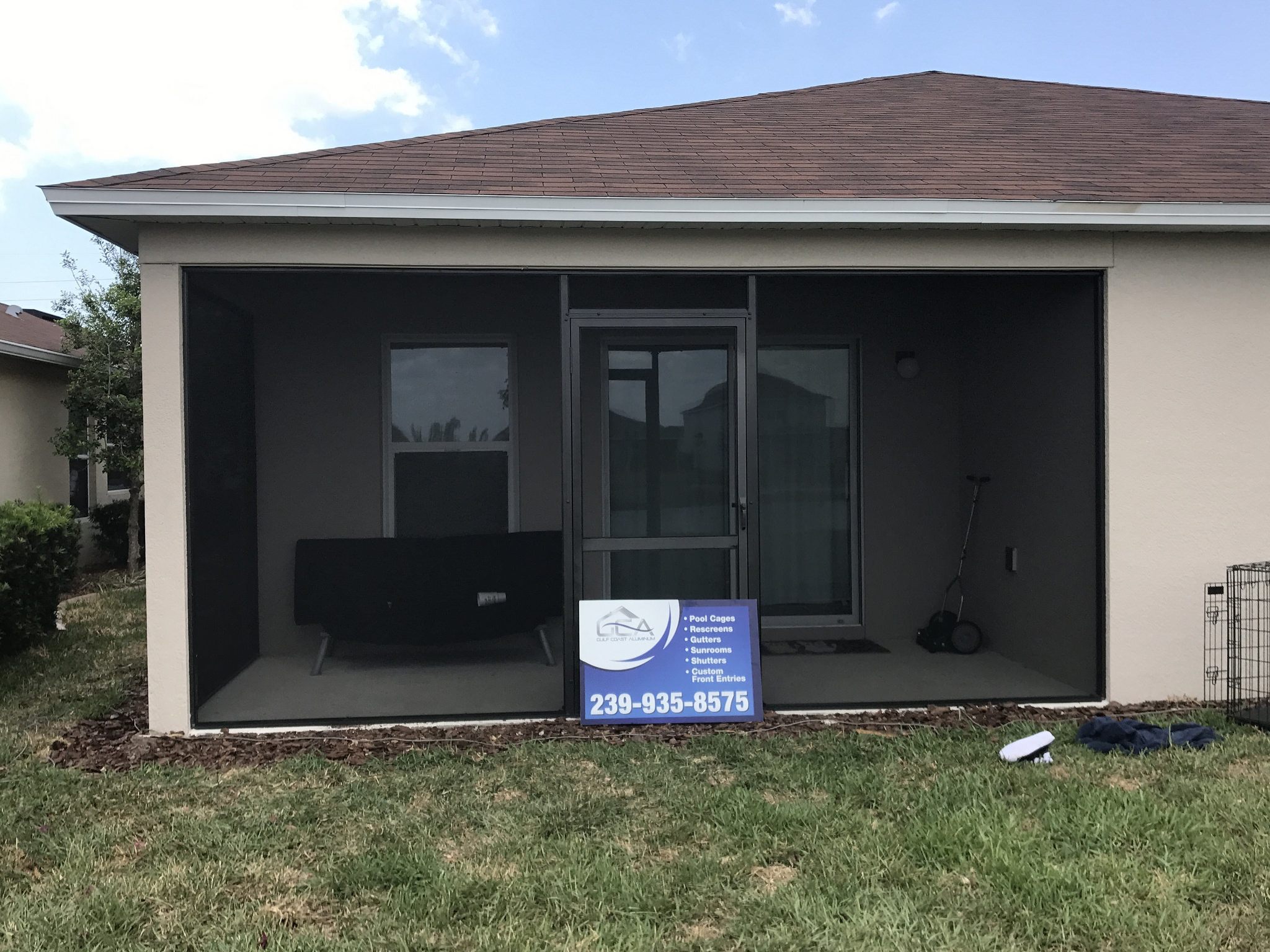
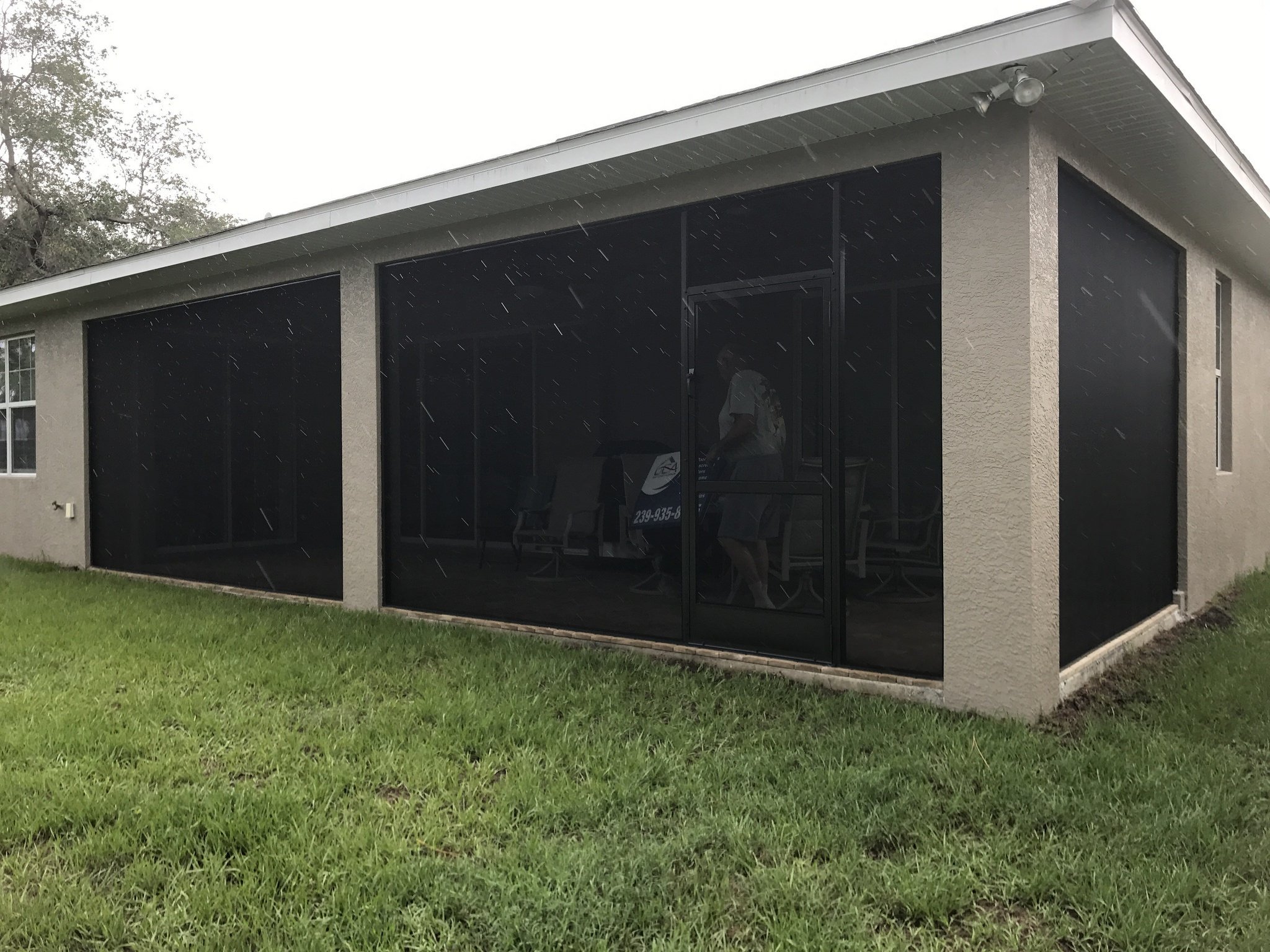
For the screening enclosure is there is no “roof” of the aluminum structure or concrete work that needs to be done as they are all under the roof of a house and built on the existing footprint. The aluminum framing is simply fabricated to spec, to accommodate the opening size with a screen door. Any screen type from fiberglass to polyester can be used, even No See’um screen for increased bug protection. With these under truss screen enclosures, architectural elements such as buttresses columns or archers may be encountered, but for an experienced screen enclosure company these obstacles are no challenge.
free guide
12 MODERN CURB APPEAL IDEAS
When it comes to the permit for these under-truss screen enclosures, in most places no permit is required although there are a few exceptions like the city of North Port in Southwest Florida. In terms of cost, they generally start at $2,000 for a small opening that is perfectly square and increase in cost from there. Most of them stay underneath a $4,000 price point but for some large openings and ones that are complicated in design or have many architectural features the price can go substantially higher.
>> Related post: Was This Lanai Built Right
Screen Enclosures With Screen Roof
The next type of screen enclosure we are going to talk about are screen enclosures with the screen roof, like a pool cage. Unlike under-truss screen enclosures, these ones have a structural aluminum roof with screen mesh on top of it and project outward from the footprint of the host structure. They keep bugs out and off your skin, leaves out of the pool drain, and still let you get that worshipped sun. For these screen enclosures a permit is always required whether you are building one entirely new or replacing an existing structure. On this website I frequently discuss the problem with many of the builders grade enclosures, that are common throughout Florida, often built through large home builders or pool builders who command “the cheapest”. They use the cheapest fasteners screen metal extrusions and finish which results in a structure that doesn’t retain its integrity and appearance for very long and leads to frequent maintenance after purchase (related blog post: is your pool cage still rated for 150 mph?). To avoid the builders grade crap, I recommend making sure that your screen enclosure has a high-quality screen, Pfeiffer or better, and if fastener with a warranty such as a Nylotech fastener. For the finish on the aluminum extrusions, a powder coat is recommended. The structures can also be engineered for maximum view with spans at least 30 foot wide in most areas of Florida and sometimes wider depending on the local wind code.
Let’s go back to the screen mesh. The builders grade orders and screen only last a couple years, so as I said you will want to make sure that high quality fiberglass screen by Phifer is user, at least, which gets you 7-9 years of life span. If it’s a property you plan on keeping for a while, a polyester screen is best. Also available is a Noseeum version of the five for screen and polyester screen if small bugs or a problem in your area.
The cost on the screen enclosure with screen roof like everything varies according to specifics. For a single story 20 x 40 screen enclosure with high-quality materials including permit in engineering you should expect to spend around $24,000 for the structure only, this does not include concrete / foundation. A larger enclosure, nearly double the size, a 30 x 50 (1500 sqft footprint vs 800), the price of 38,000 to 40,000 would be expected for a reputable contractor using premium materials. No these prices do not include concrete or foundation work, if needed this work would likely double the reference numbers given here.
Screen Enclosures With Solid Roof
Finally a screening closure with solid roof, also known as the screen room. These are my favorite as they are usually built in a scenario where there just is not enough patio space and they bring a solid roof which can be used all the time. For a long lasting well sealed structure you want to make sure the roof is built out of aluminum composite panels, panels with an aluminum shell and high density foam core. These panels provide insulation, maximum longevity and are optimized for minimal leakage wwith seems every 4 foot, as opposed to 16 inches for other aluminum roofing options.
One of the most common sizes of screen room we see is a 12′ x 24′. This size provides enough room for tables chairs and moving around. Smaller than those dimensions are generally found to be rather tight and limiting. A 12 x 24 screen room you could expect to fall in the price of about $20,000 including permit and engineering, but excluding concrete and foundation work which may add several thousand dollars to the price.
Now that you’re familiar with the 3 types of screen enclosures out there, let me know if you have any questions in the comments below. If you would like an estimate for a screen enclosure like these be sure to check out the contractor network, and I will put you in touch with 3 reputable professional and established contractors in your area to provide quotes on your project!
RELATED QUESTIONS
Answers coming soon.
What types of screen are best?
It used to be that 'American made' screens by Phifer and Superscreen were the best. Today those brands outsource some or all of their production overseas.
As of updating this in 2023...
...all of the premium polyester screen meshes are comparable in strength in longevity (SuperScreen, UltraScreen, TuffScreen).
For the standard fiber glass screens I still find Phifer to be superior, as many of the generics or unknown brands are producing low quality.
Can you recommend a good screen enclosure contractor?
I do work with a network of contractors nationally. By submitting your quote request here, contractors will contact you to earn your business. This puts YOU in the drivers seat, as opposed to chasing contractors. I find they're typically more responsive, professional and have better prices. Keep in mind they are independent so you still need to do your own due diligence, but contractors that are eager to earn your business and show professionalism early on typically do a better job then the ones with the "I don't need your business attitude.
Do screen enclosures need a concrete footer?
99% of the time YES. Footers and accompanying permits commonly cause problems in the process of getting a screen enclosure. Often someone will want to build an enclosure on an unpermitted slab and be forced to remove the slab and restart. I cover more on footers here.
Will a screen enclosure withstand a hurricane?
In Florida, screen enclosures are built to withstand hurricane force winds, but there are few things to consider...
#1 as the fasteners degrade the enclosure becomes substantially weaker. In short you should ensure that a high grade fastener is used and that they are replaced as they fall out of manufacturer strength tolerance.
#2 Wind itself may not cause damage, but the airborne trash can could.
Do screen enclosures need a permit?
Yes, screen enclosures are considered a permanent structure in Florida and require a permit. If you get an enclosure without a permit... you may go years without a problem but typically problems come up resulting in the structure needing to be demolished. In a 'worst case' scenario I was privvy to, an enclosure was built without a permit, and the property was sold. After the transaction the buyer realized the enclosure had no permit and filed a lawsuit against the seller for a substantial sum based on the value the enclosure contributed to the property. It was a messy situation. I cover more permit issues in this post.
What can you do for privacy on a screen enclosure? (+easy to install products)
Most homeowners look for a 'magical' privacy screen. Here's the deal, none of the 'privacy' screens will give you privacy on a pool cage style screen enclosure. They will however work in an under roof application. If you want privacy on your screen enclosure, curtains, shrubs, or fencing is the ticket.
Should you get a screen enclosure?
In suburban areas of Florida, mosquitos thrive and most people get substantially more use of their pool/patio area with a screen enclosure. In heavily urbanized areas like South East Florida they are a little less necessary as there is not much standing water on the ground.
Screen enclosure maintenance.
Screen enclosures need to be rescreened and the fasteners replaced. This could be as short as 5 years if low grade materials were used or as long as 20 years if premium materials such as Polyester screen (SuperScreen or similar) and Nylotek fasteners. It's generally worth paying for these materials.
How can you keep dirt out of the enclosure?
There's 2 options. A material called Florida Glass which is screen mesh with a vinyl laminate is a pretty good option and can be installed around the lower portion of the enclosure. Alternatively a metal 'kickplate' can be installed. Florida Glass is sufficient for most people, while the metal kickplate is preferred for dogs that try to get through the screen or bark at lizards and things on the other side.


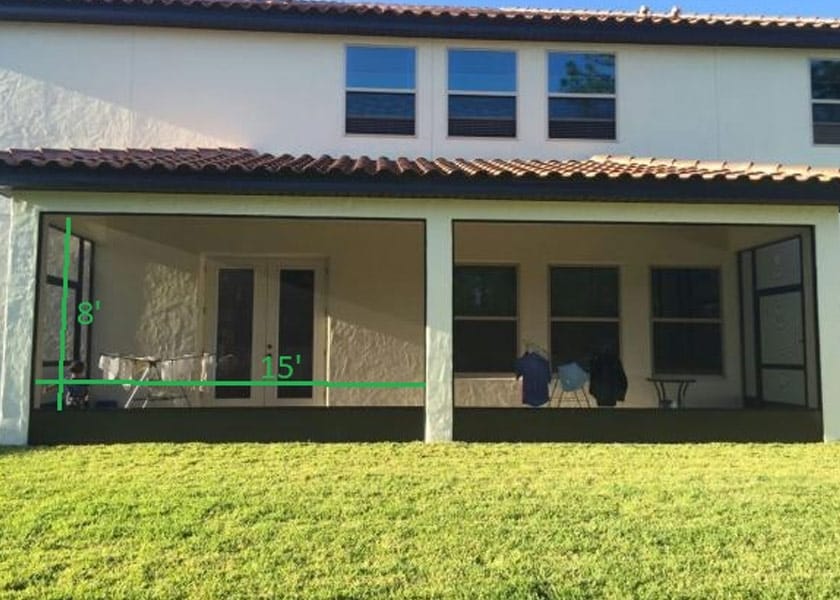
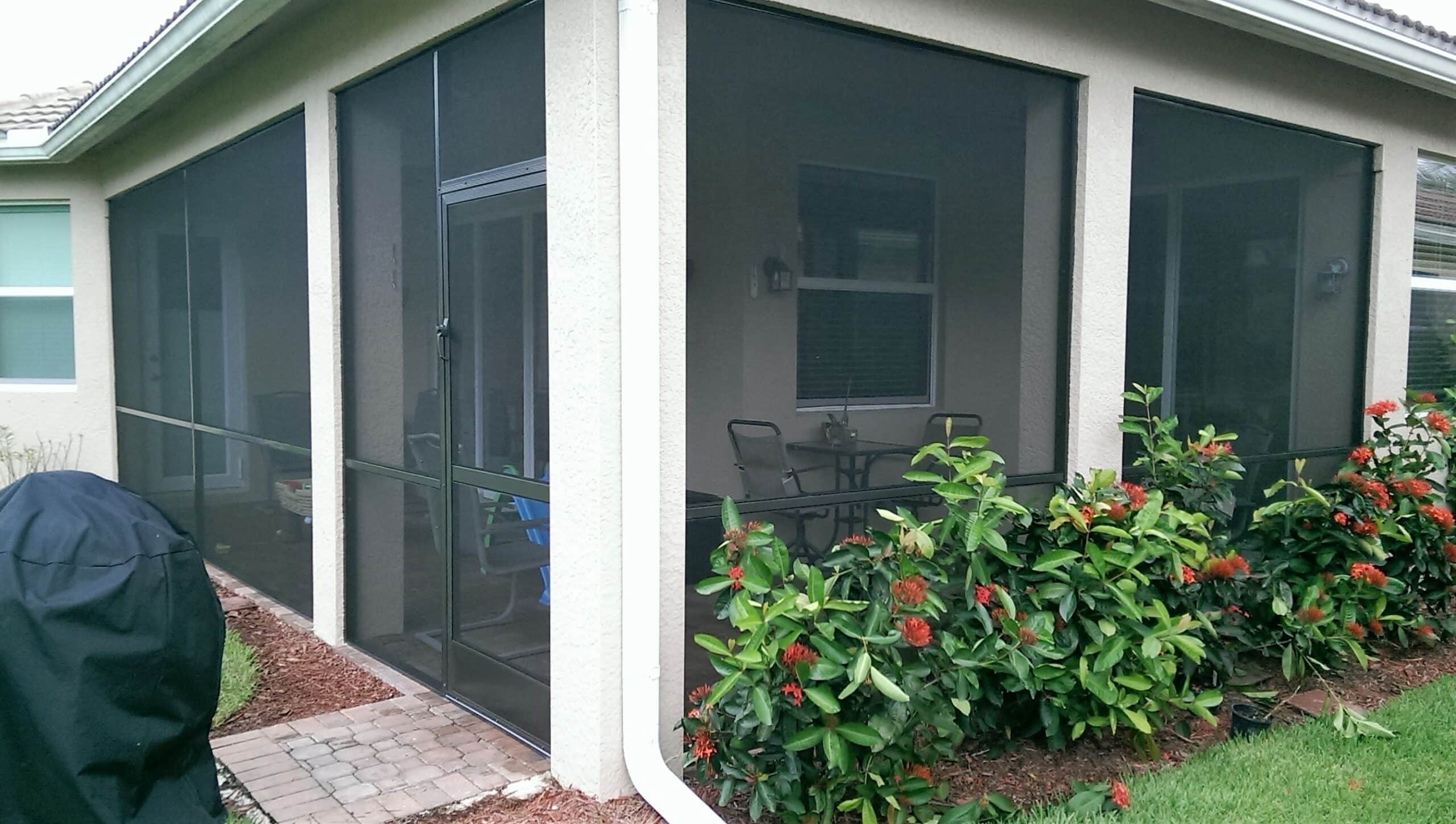
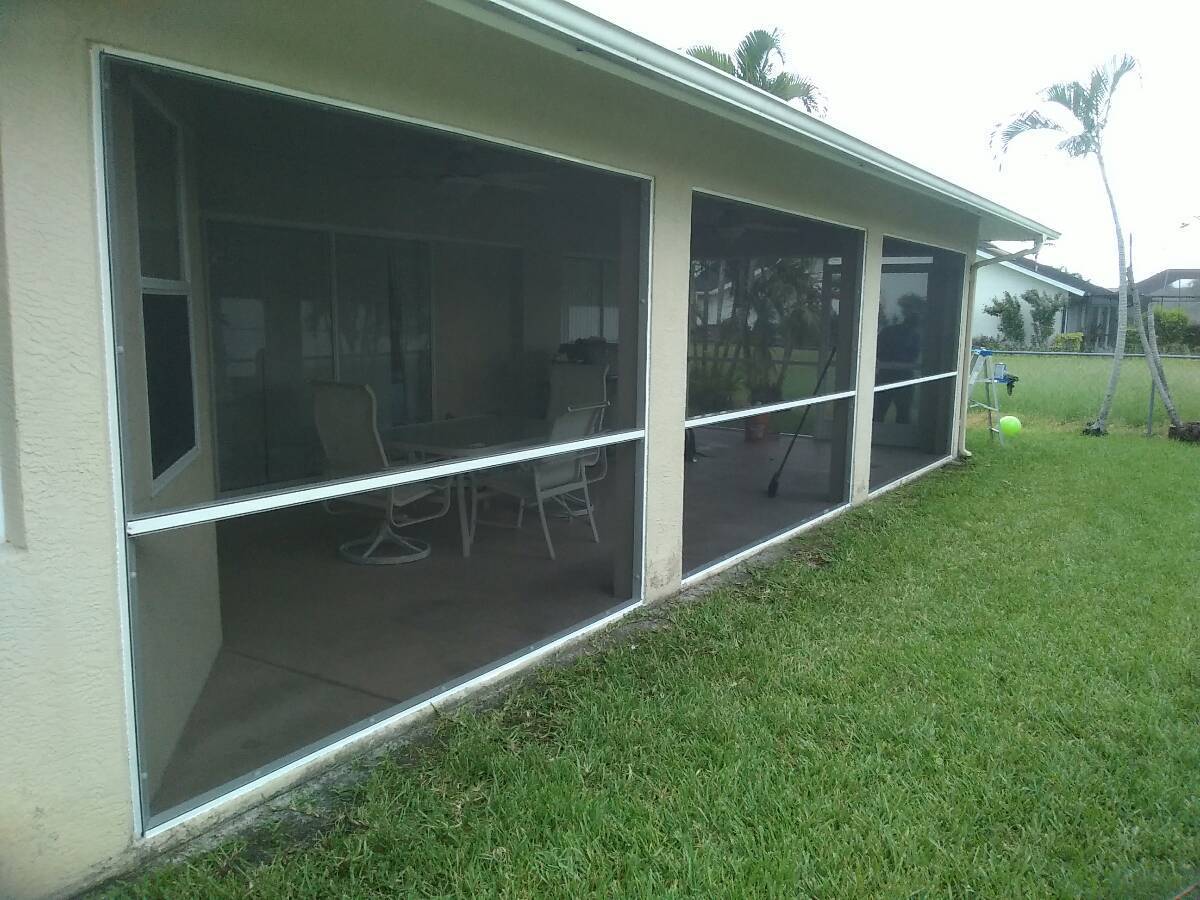
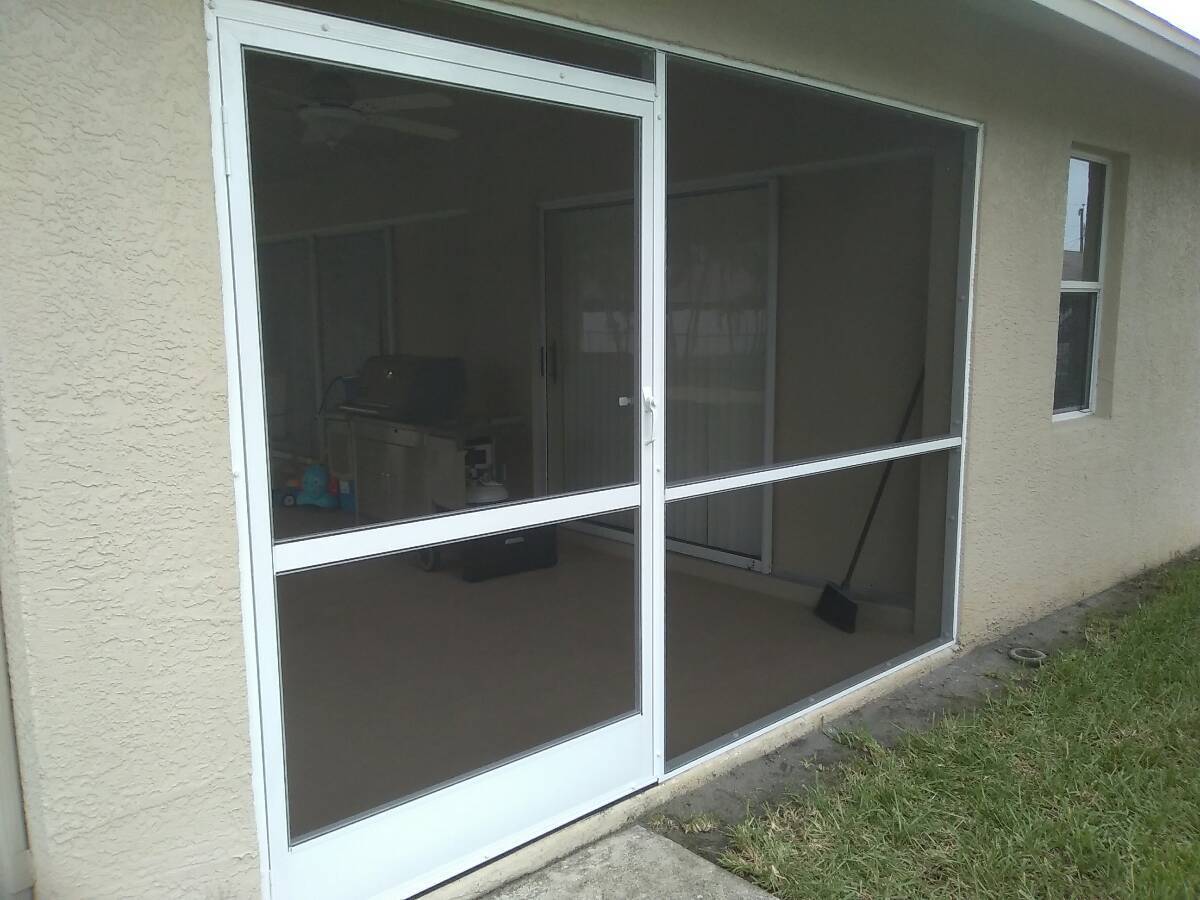
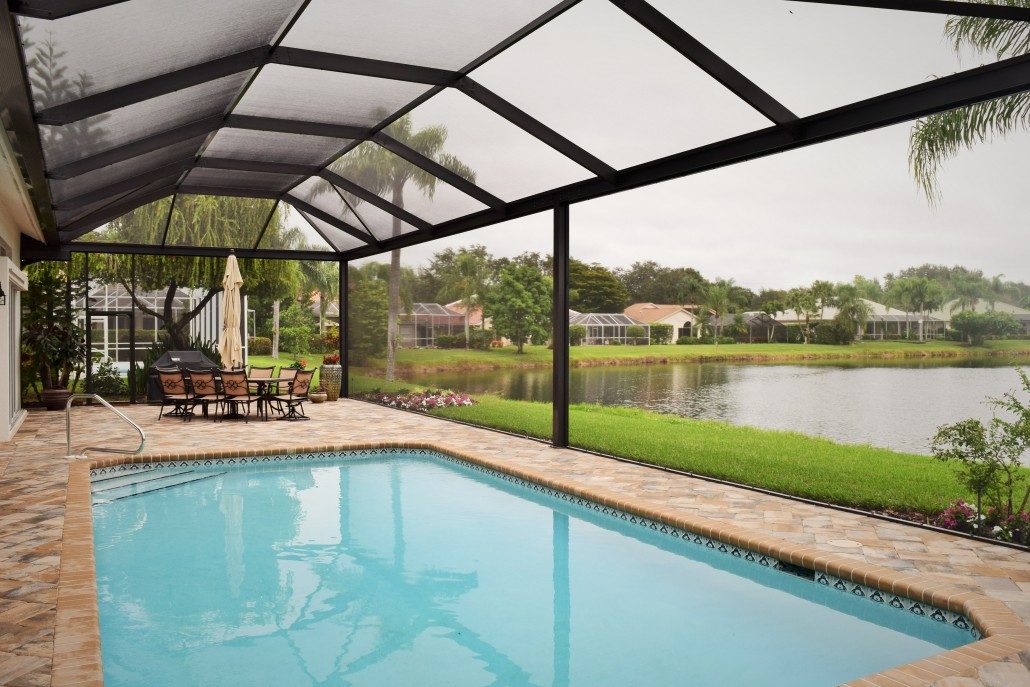
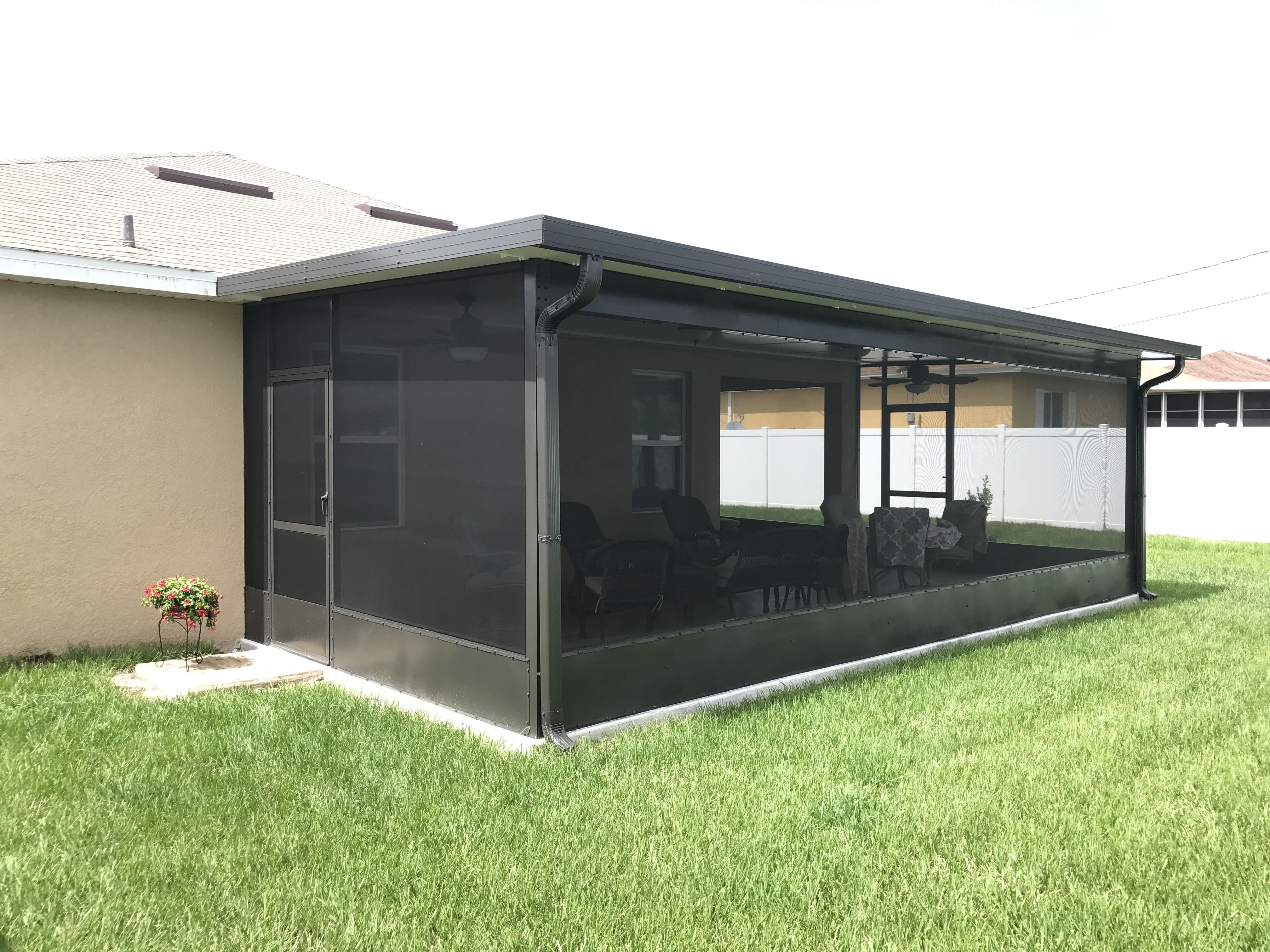
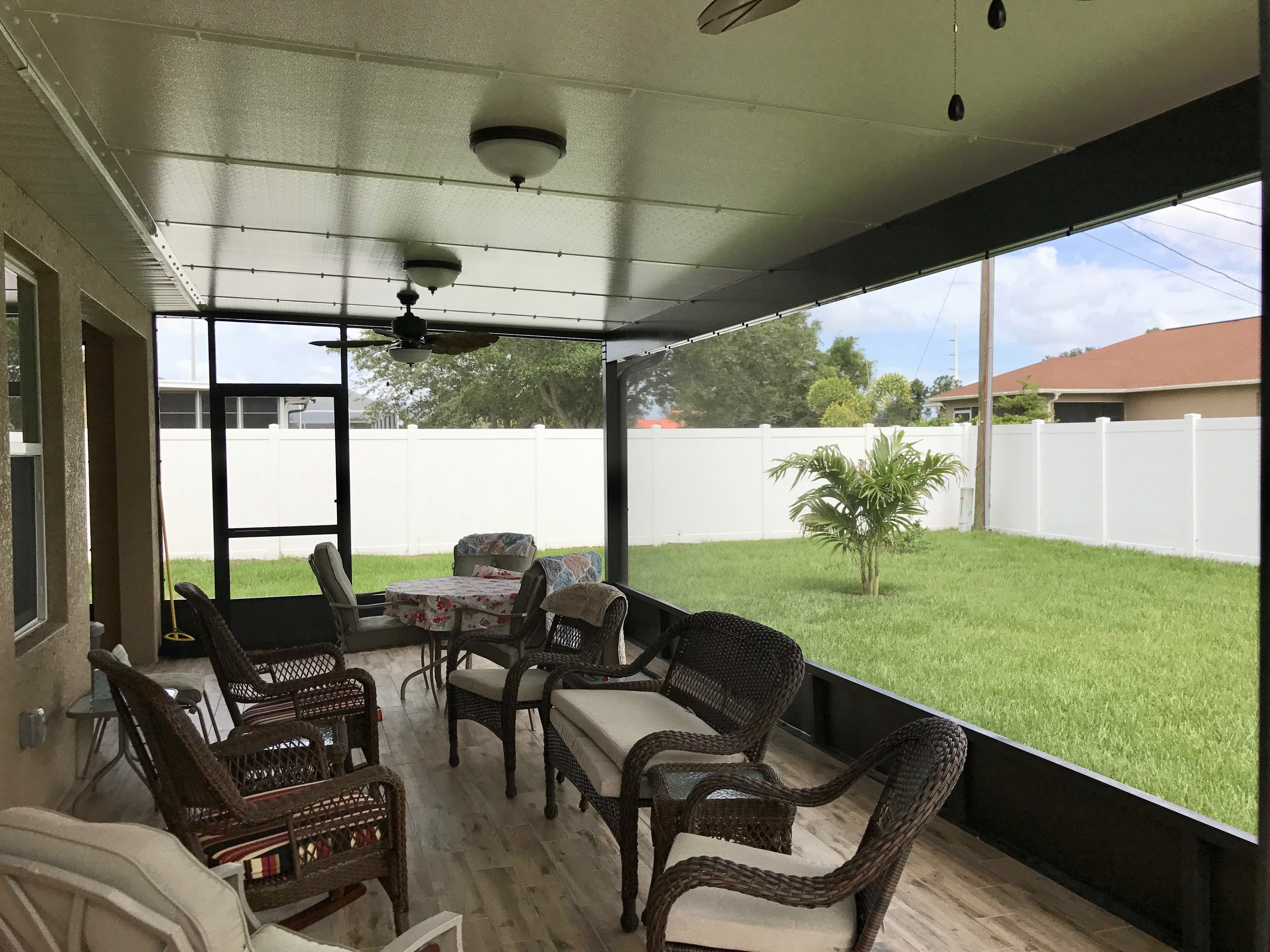
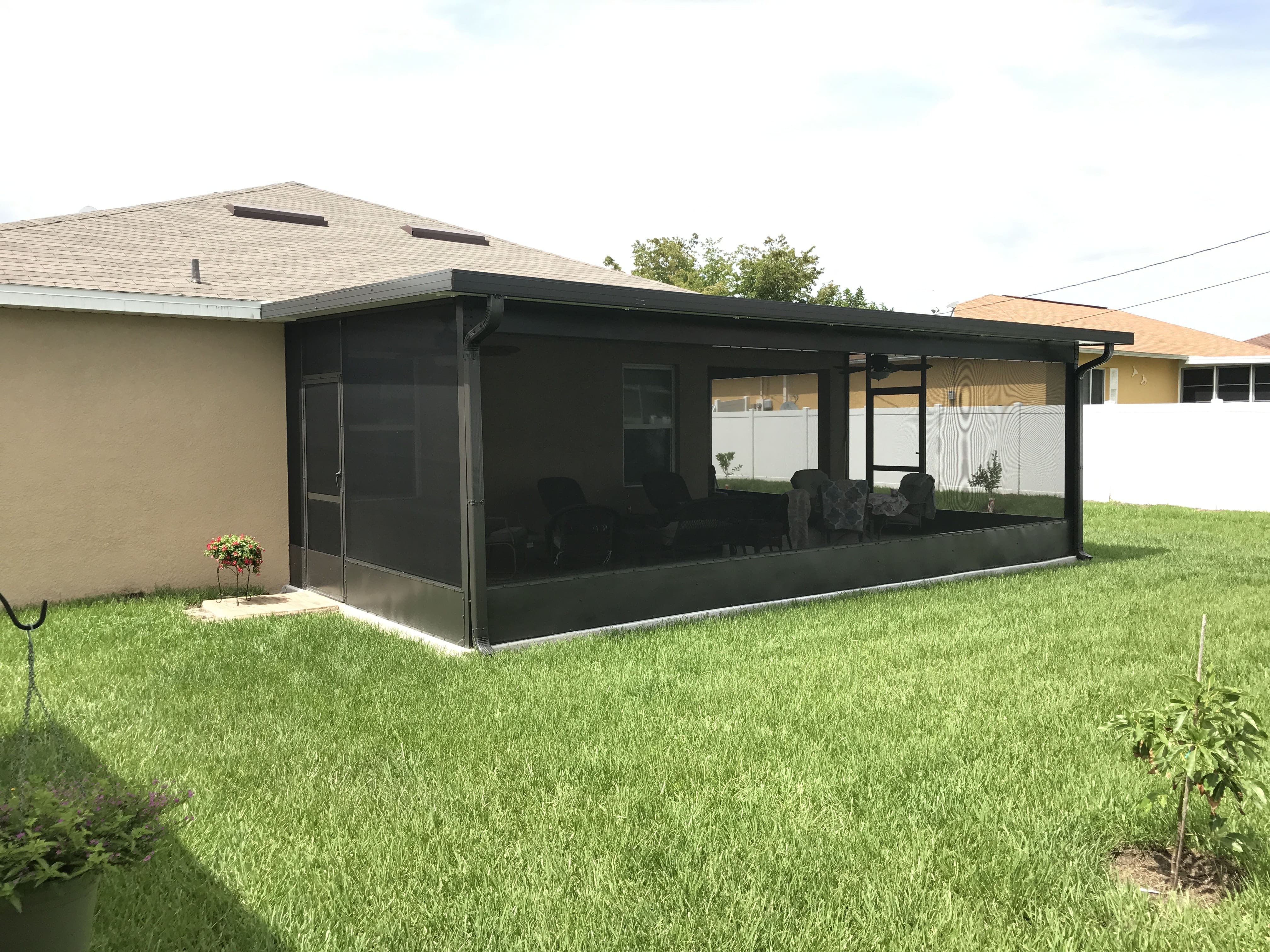
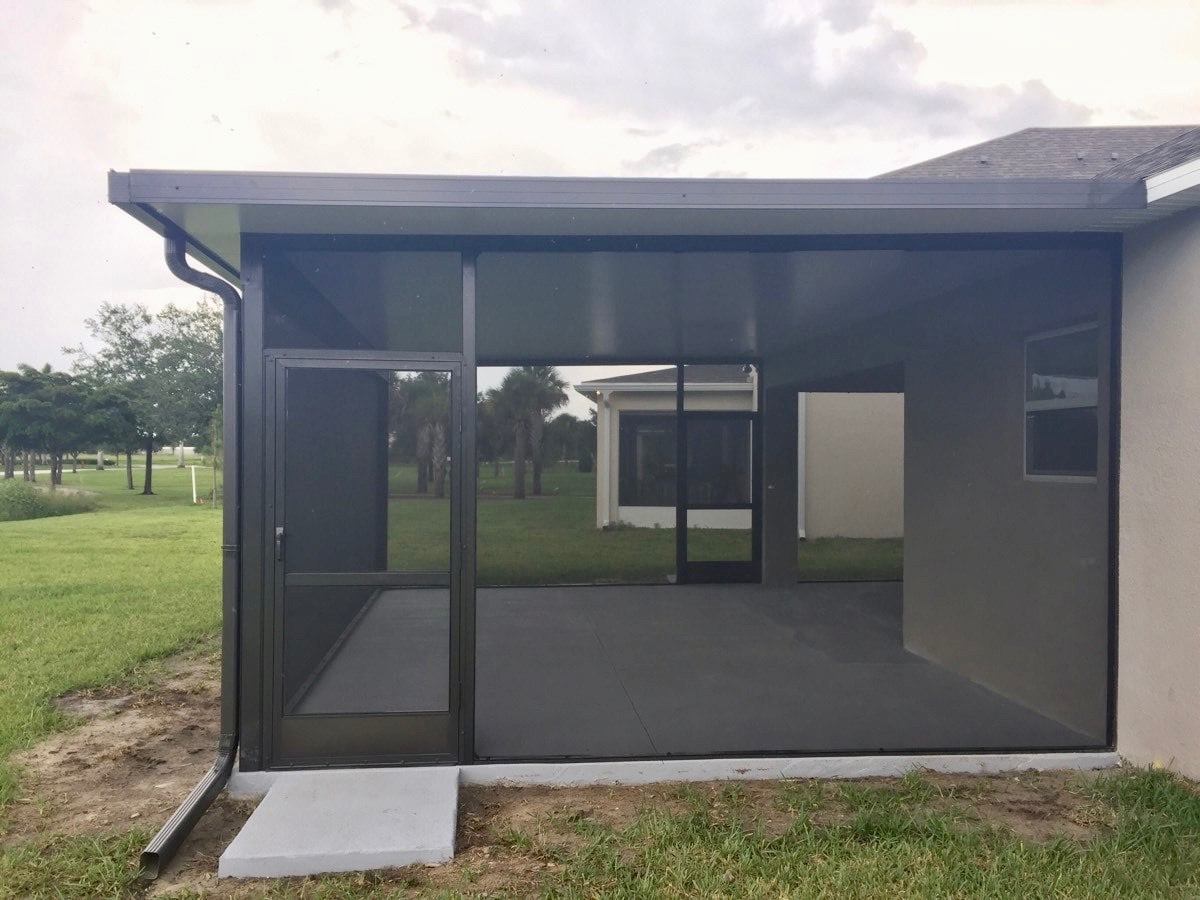
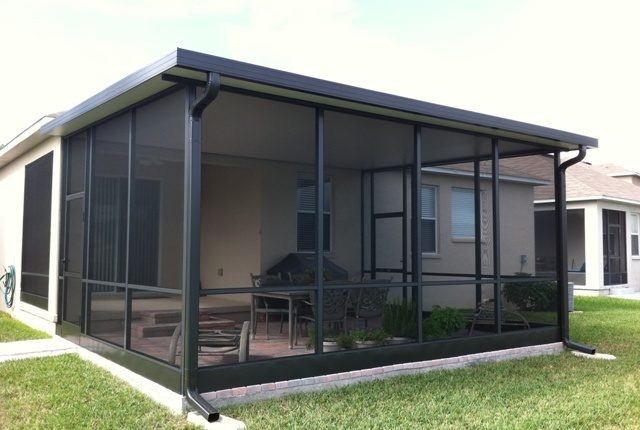
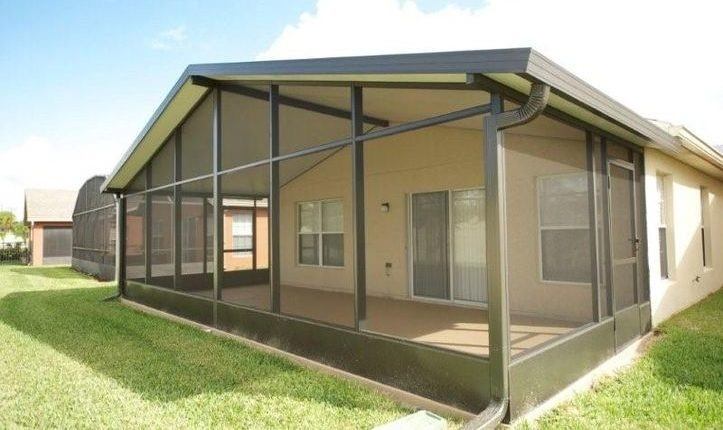
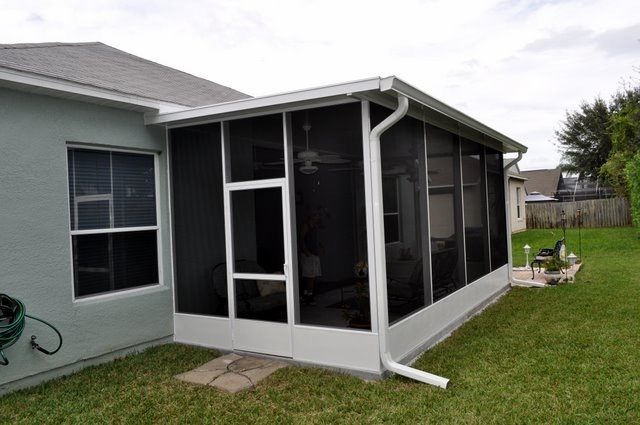
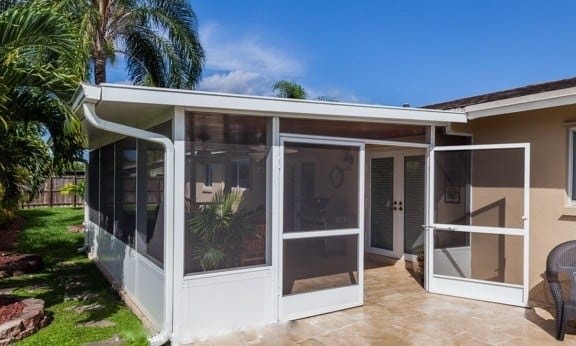
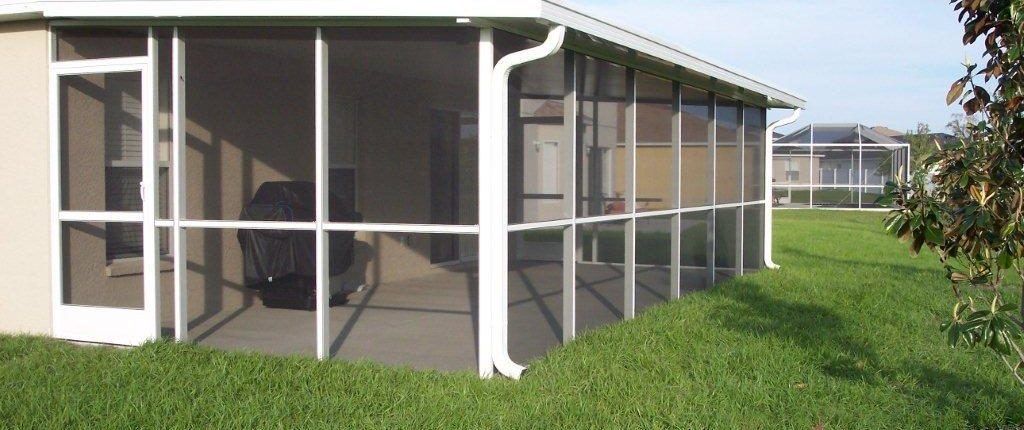

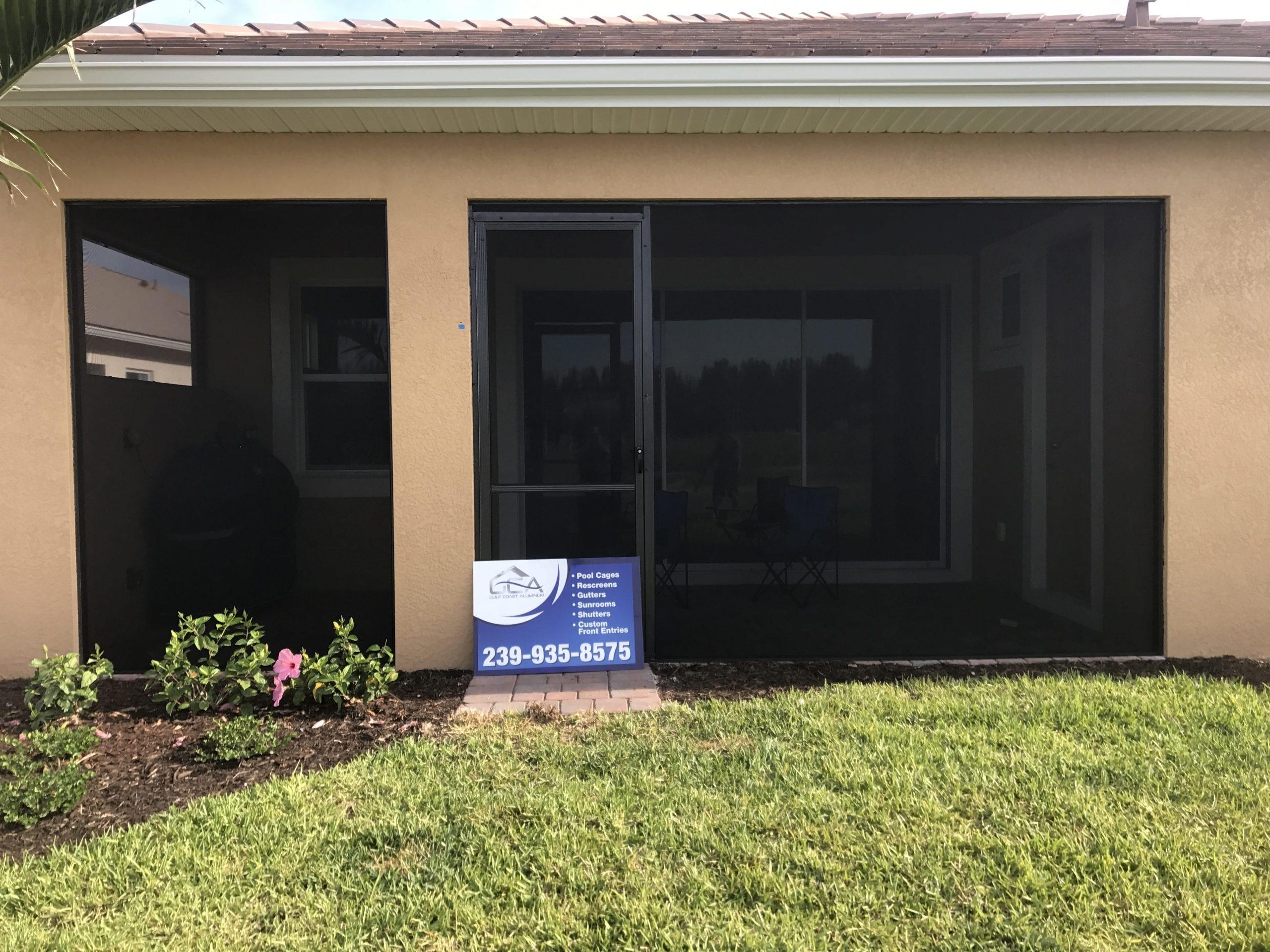


We have a 14' wide by 13' deep concrete patio and want a white aluminum screen enclosure added.
It can be done!
Hello, my name is Jason. I would like to discuss my project with you. My phone number is (337) 781-7822.
Thank you ????
Thanks for the comment Jason. I am no longer in the business of providing services. I recommend utilizing HomeAdvisor. While contractors don’t like it, it is the best way for homeowners to find price competitive and responsive contractors for any project. Submit your free estimate request here: http://www.homeadvisor.com/ext/34299632
I am interested in a concrete base screened porch with insulated gable roof. can you suggest a few contractors for this project.
1. Need concrete pad with footing
2. Need screen with kick plates
3. Insulated roof
4. one door
5. Size is 14 ft x 35 ft
I recommend utilizing HomeAdvisor. While contractors don’t like it, it is the best way for homeowners to find price competitive and responsive contractors for any project. Submit your free estimate request here: http://www.homeadvisor.com/ext/34299632
Hi, I bought a home with a built in screen enclosure appx 700 ft I get a lot of dirt and was wondering if I can place a clear panel to prevent the dirt
You should look into having Florida glass installed on the bottom.
Amazing how much more expensive pool cage costs have risen since the writing of this blog. As of 1/27/23 I’ve gotten estimates for a 24′ x 34′ pool enclosure ranging from $22.4k to $27.5k. Too rich for my blood.
Yes this post is 6 years old or so and due for an update!
would like to replace an existing screen birdcage roof with a metal roof. Can you recommend if this is feasible. Roof is 118″ X 160″ (appx. 10′ X 13 1/2′) Thank you.
Yes that is well within the structural size constraints of a composite roof.
A wealth of information. Thank you
Glad you found it helpful and insightful!
extend covered lanai with screen only and extend slab.
40 feet wide by 10 feet deep.